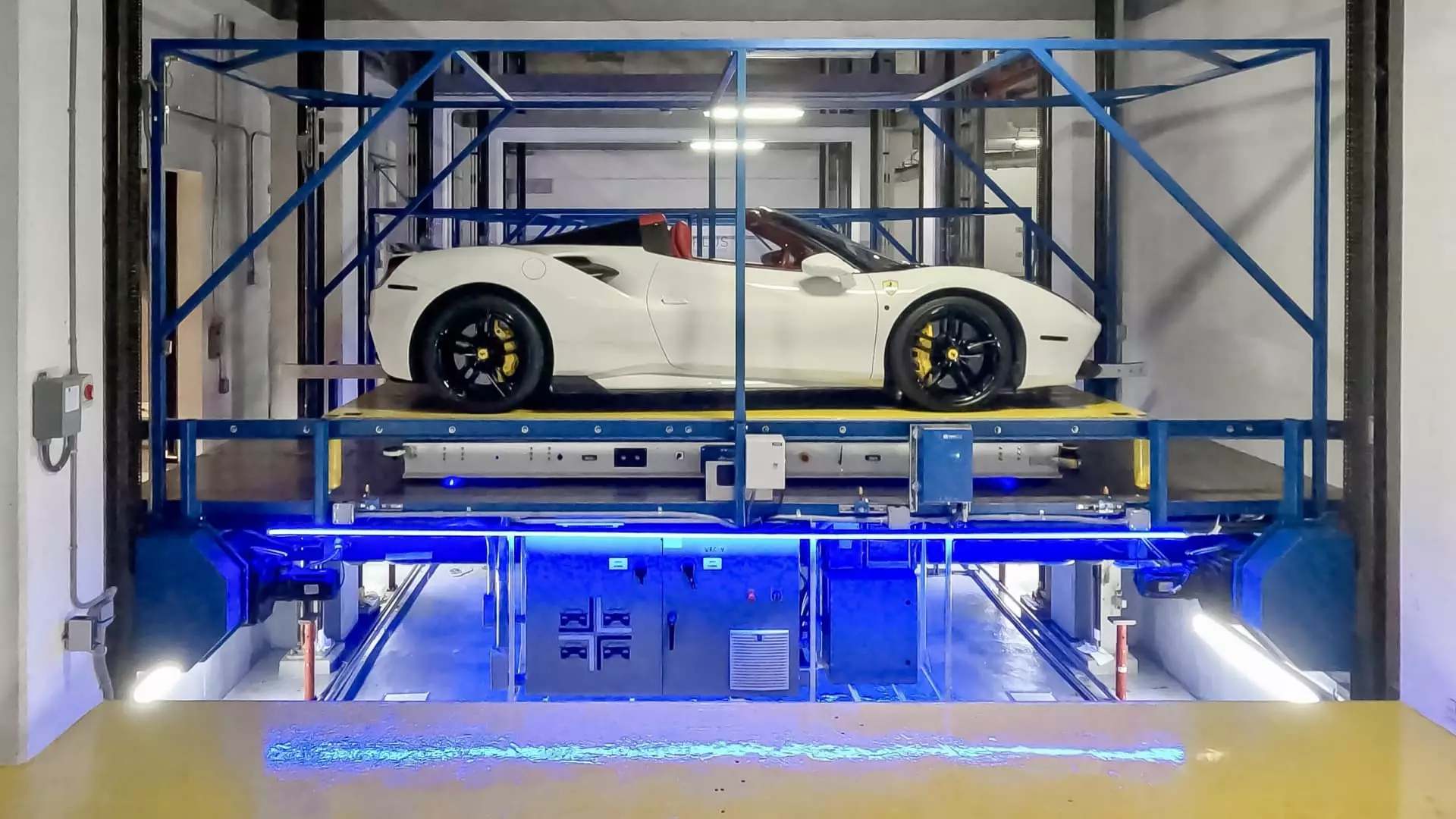In the affluent neighborhoods of urban cities, luxury living comes with a plethora of amenities, and one of the most captivating innovations is the automated parking system. These groundbreaking systems not only maximize the use of valuable real estate but also provide residents with convenience, efficiency, and a touch of futuristic flair. The Brickell House, a prominent luxury condominium in Miami, is a prime example of this technological evolution, boasting the largest automated parking system of its kind.
The Brickell House features a staggering 13 levels of parking packed into a state-of-the-art facility that employs a fleet of robots—known as Automated Guidance Vehicles (AGVs)—to seamlessly manage vehicle storage and retrieval. As residents enter the garage, they are greeted by a series of drive-up bays where they can relinquish their vehicles to robo-valets, who then take over the cumbersome task of finding a parking spot. This meticulous and highly specialized operation is facilitated by a blend of lasers, barcodes, and advanced robotics, effectively rendering traditional parking experiences outdated.
Moreover, the staggering price of parking in luxury real estate further underscores the value of these automated systems. In high-demand markets like Manhattan, parking spots can fetch upwards of $300,000, which reflects the growing reliance on automated solutions to meet the needs of affluent residents who demand seamless integration of technology into their daily lives.
The Mechanics Behind the Magic
At the heart of this automated parking marvel are the AGVs, which use computers and sensors to navigate the multi-level garage. Each robotic vehicle is equipped with sophisticated technology, including an electronic eye that reads embedded barcodes, allowing it to maneuver precisely and transport vehicles with impressive efficiency. The AGVs, measuring 12 feet in length and 4 feet in width, are engineered to handle cars weighing up to 6,000 pounds, showcasing not only advanced robotics but also safety measures that allow for the careful handling of valuable vehicles.
During a demonstration event, camera rigs captured the extraordinary agility of the AGVs as a high-end Ferrari was retrieved from the ninth level and brought to the ground floor in under four minutes. This impressive retrieval speed is a testament to the efficiency and reliability of automated systems, which can process numerous vehicles without compromising performance.
Investing in automated parking offers developers considerable benefits beyond mere convenience. With commercial real estate at a premium in urban areas, utilizing a parking system that can optimize space, often tripling capacity compared to traditional structures, has profound implications. According to Peter Manis, president of ParkPlus Florida, the removal of driving ramps and multiple lanes means more space can be dedicated to residential units rather than vehicle storage, enhancing the building’s overall marketability.
While the initial cost of installing an automated parking system can range from $20,000 to $80,000 per parking spot, projections suggest that the long-term benefits—such as increased residential square footage and corresponding rental or sale value—make the investment worthwhile. This trend is poised to grow as more developers recognize the necessity of innovative solutions in meeting the challenges of urban density.
Despite the promising efficiency of automated parking systems, several challenges remain. High-profile incidents, such as that experienced by billionaire Palmer Luckey, who found himself trapped in an elevator at his automated garage, highlight the need for reliable technology and thorough testing. Luckey, who invested heavily in his multi-level car collection garage, alleges massive damages due to malfunctioning lifts, illustrating that technology’s reliability is paramount, particularly in the luxury market.
Similarly, Brickell House faced its own reliability issues prior to the installation of the ParkPlus system. A previous, malfunctioning automated parking mechanism resulted in legal disputes and significant financial loss for the condo association. However, the installation of the new system represents a renewed commitment to innovation in parking solutions, ushering in a new era of reliability for both developers and residents alike.
The rise of automated parking systems signifies a remarkable shift in urban living, showcasing an intersection of technology, real estate, and luxury lifestyle. As more buildings in high-density urban areas look toward automation to enhance functionality and resident experience, the landscape of real estate is rapidly evolving. While challenges remain, the successful implementation of automated parking at Brickell House serves as a beacon of innovation, paving the way for future developments that prioritize efficiency and convenience. The continuation of these advancements positions automated parking as a core component of contemporary urban living, ultimately reshaping how we think about and manage our vehicular needs in bustling metropolises.

